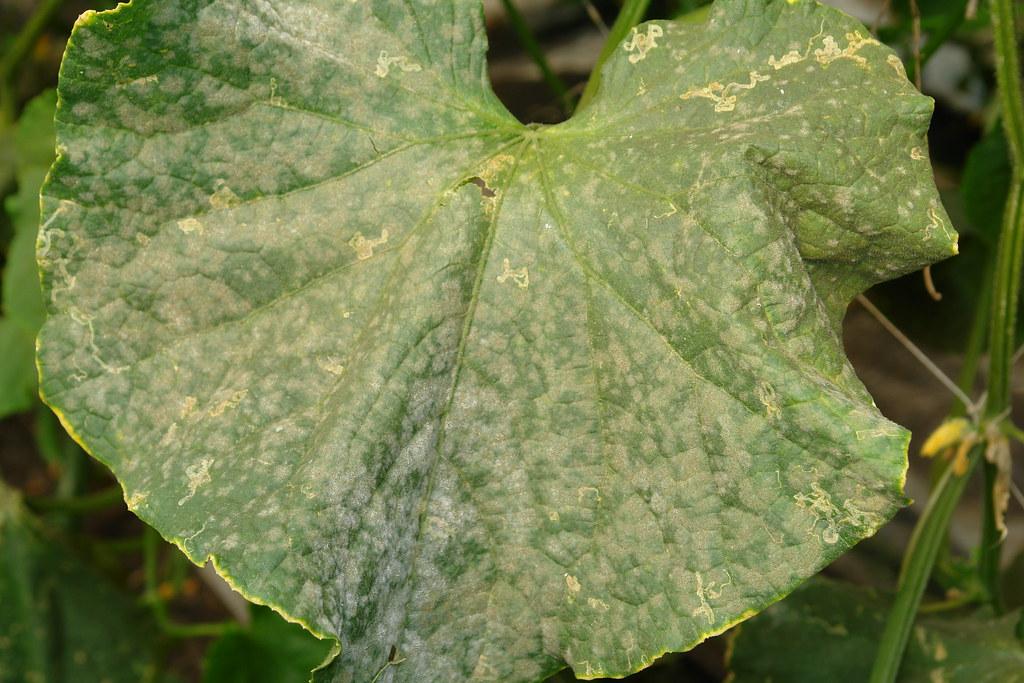
Downy mildew
Peronospora destructor
What is Downy mildew (Peronospora destructor)?
Downy mildew (Peronospora destructor) is a plant disease caused by a fungus-like organism. The disease is widespread and can be found in various regions where these crops are cultivated. It affects plants belonging to the Allium genus, such as garlic, onion, shallot, chives, and leek. In addition it thrives in cool temperatures (50-77°F) and high humidity. Symptoms include circular clumps of yellowed plants in the field, pale green to brown or yellow collapsed leaf tissue, and grayish-white fuzzy growths on older leaves.
How does Downy mildew (Peronospora destructor) occur?
Downy mildew (Peronospora destructor) reproduces through the production and dispersal of spores. It requires live hosts but survives in debris and soil. It thrives in cool, humid conditions (≥95% relative humidity), with spore production declining above 75°F and ceasing above 82-84°F. Airborne spores land on plants and need leaf wetness for infection. Infection occurs in 2-3 hours at 43-61°F and 5 hours at 61-68°F. Sporulation happens 8-16 days after infection, facilitating rapid disease progression under favorable conditions.
Symptoms
1 - Effects on Plants
• Downy mildew (Peronospora destructor) significantly affects plants by causing leaf loss, reducing photosynthesis, stunting growth, and lowering yield. This makes plants more susceptible to other pathogens and stress factors. • Moreover, the presence of discolored and distorted leaves diminishes the market value of the affected plants.
2 - Environmental Implications
Outbreaks of downy mildew disrupt natural and agricultural systems, resulting in reduced biodiversity. Crop losses and increased production costs have a significant impact on farmers and industry.
Solutions
1 - Crop Rotation and Planting Practices
• Implement a 3-year rotation away from Allium and other crops in fields where the disease has occurred. • Use disease-free bulbs, sets, and seeds for planting. • Remove and destroy any infected plant material, including residue, volunteer plants, and culls. • Avoid entering fields when leaves are wet to minimize the spread of spores. • Take care to prevent crop injuries caused by herbicides and other materials.
2 - Minimize Canopy Leaf Wetness
• Avoid sprinkler irrigation, especially as the canopy fills. • Adjust the irrigation schedule to promote leaf drying and prevent prolonged leaf wetness. • Choose fields with good air movement and proper drainage. • Align rows with prevailing winds to enhance air circulation. • Adjust planting dates to avoid a full canopy during conditions favoring downy mildew.
5 - Fungicides for Treatment
• Oxathiapiprolin/Mandipropamid: Brand name - Orondis Ultra. • Fenamidone: Brand name - Reason 500 SC. • Mefenoxam/Mancozeb: Brand name - Ridomil Gold MZ WG. • Mefenoxam/Chlorothalonil: Brand name - Ridomil Gold Bravo SC. • Dimethomorph: Brand name - Forum. • Mancozeb: Brand name - Dithane F-45 Rainshield. • Fluazinam: Brand name - Omega 500F. • Chlorothalonil: Brand names - Bravo Weatherstik, Echo 720. • Copper Sulfate: Brand name - Basic Copper 53. Note: The use of fungicides should be in accordance with label instructions and resistance management practices. Thorough foliage coverage is essential for effective control of downy mildew.
